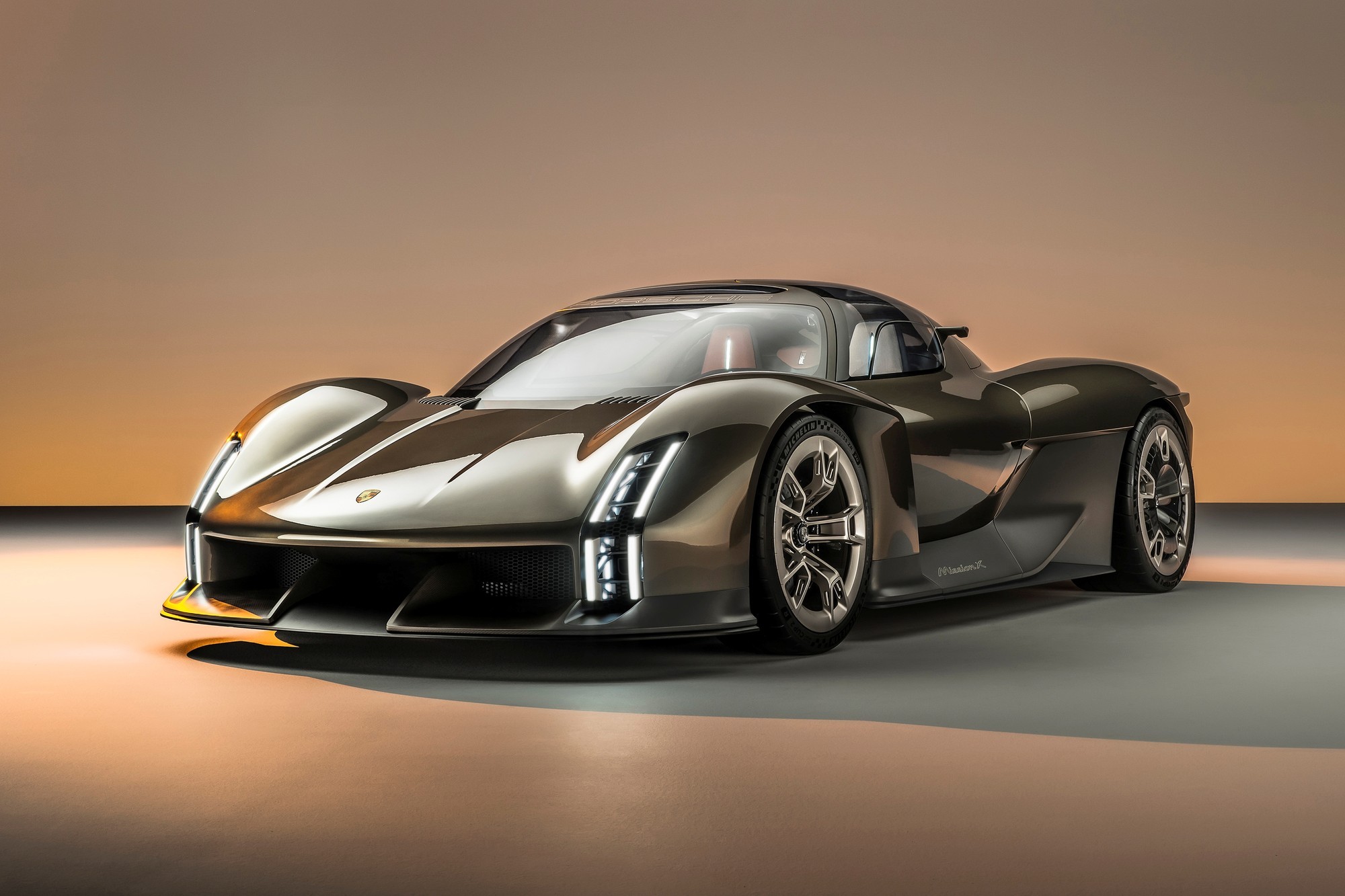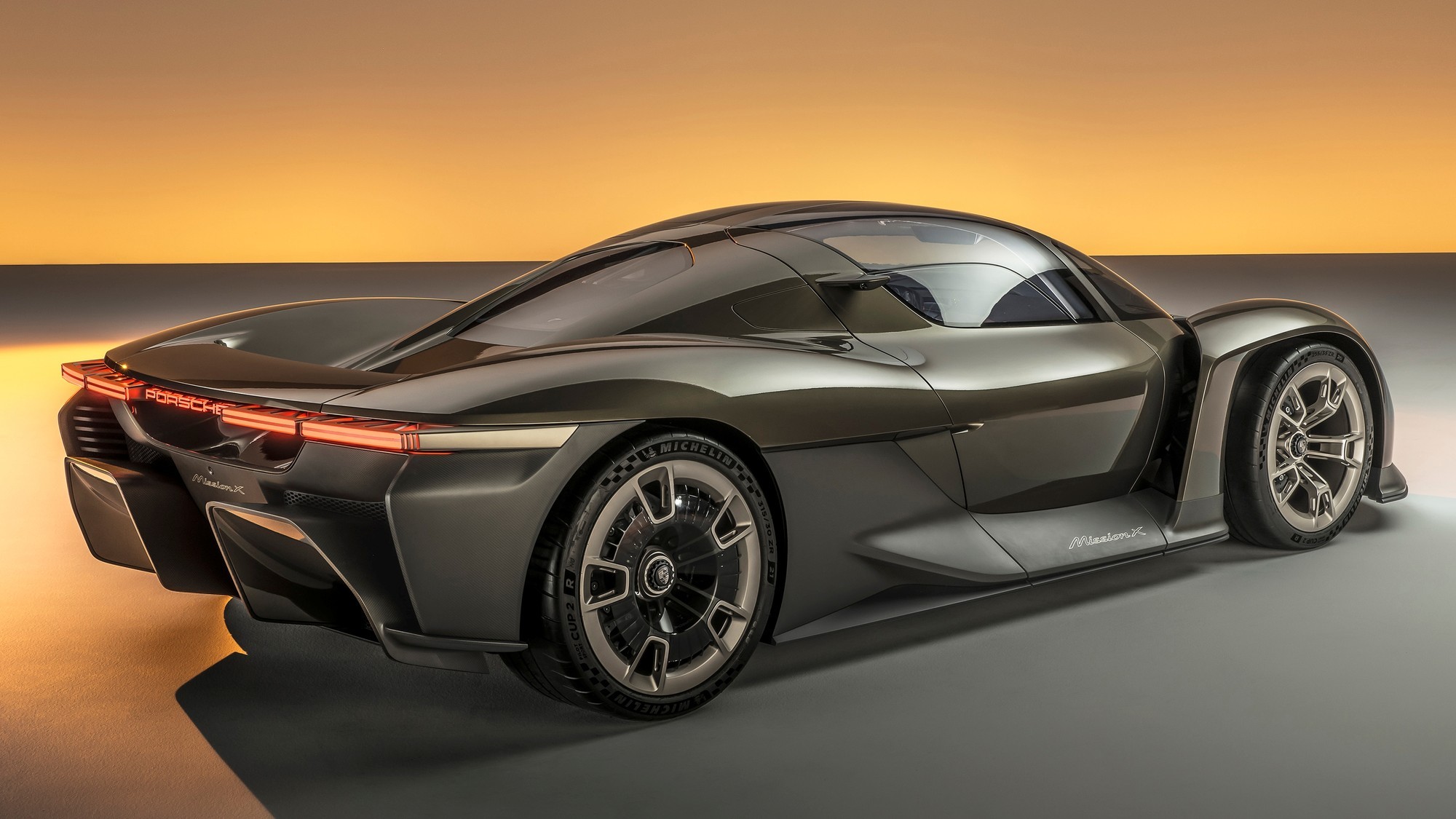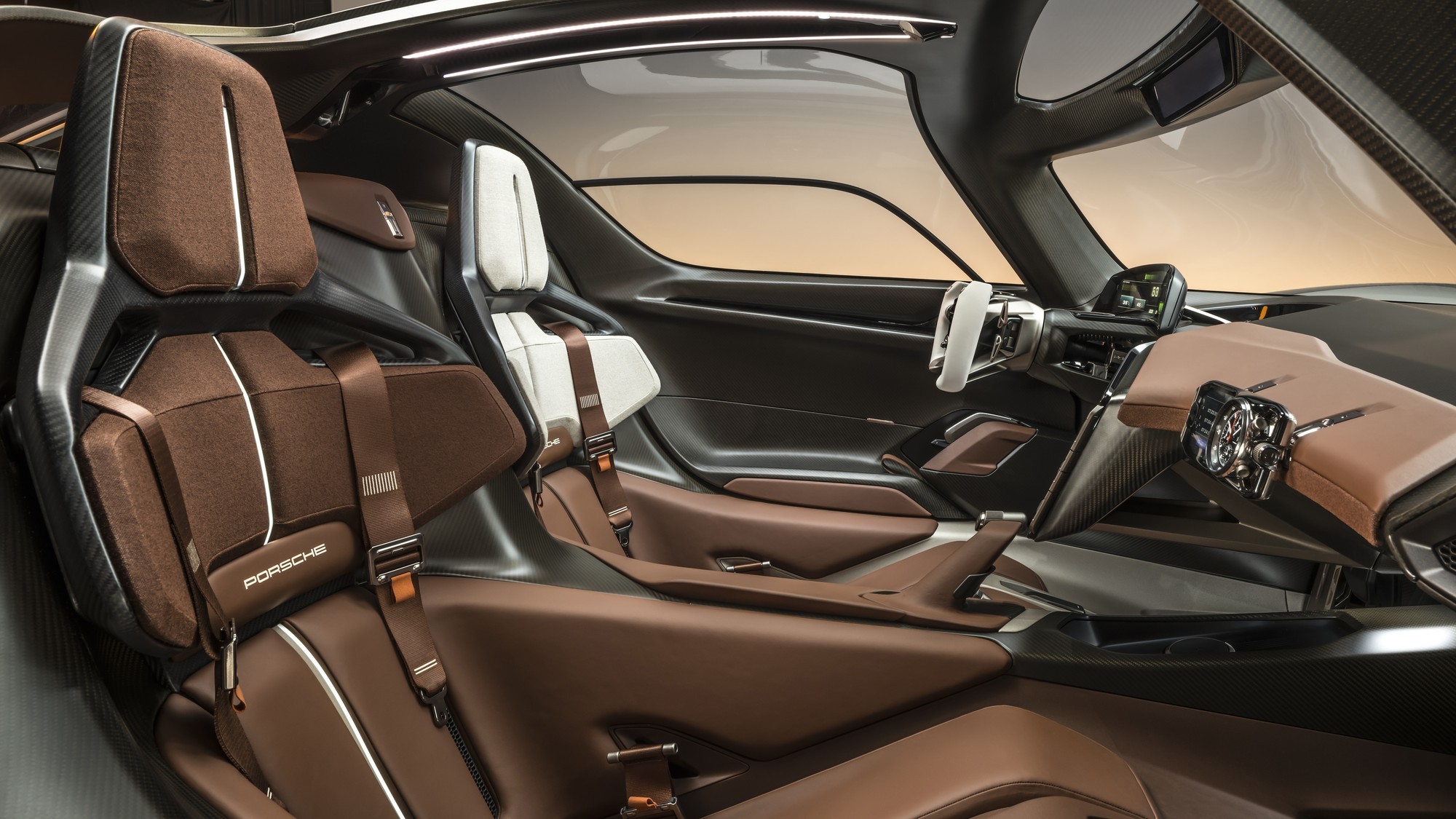
The Mission X concept marks a rather rigid technical benchmark for Porsche engineers: by the end of this decade, they should show the world the best of the best electric supercars .
In the rich history of Porsche, there were, in fact, only three full-fledged supercars — the 959, Carrera GT and 918 Spyder, the release of the latter ended in 2015, there is no heir yet, although thoughts about him do not leave the friendly Porsche team. In the portfolio of archival concepts that Porsche made public in 2020, there were several potential flagship sports car candidates, all of them imbued with a Le Mans theme, but none of them ever went into production. Last year, Porsche materialized the virtual concept Porsche Vision Gran Turismo, made for the computer game Gran Turismo 7, at the same time it became clear that there would be a new serial supercar: it is in Porsche’s plan, it’s just not in the first place, but is, so to speak, The icing on the cake is the full electrification of the lineup, which will not affect the iconic 911.

Porsche still hasn't announced a release date for its new flagship supercar, but this week's Mission X concept brings us exactly as close as the Porsche Mission E was the prologue to the electric Taycan family. In turn, the 2021 Porsche Mission R concept foreshadows a new, all-electric Porsche 718, due to enter the market in 2025. In a word, if there is a “mission”, then it must be completed.Mission X is timed to coincide with the 75th anniversary of Porsche's first production car, which was the Porsche 356, produced from 1948 to 1965 (by the way, it inspired the company to introduce the Porsche Vision 357 concept at the beginning of the year). The aesthetic of the Mission X, like its aforementioned concept predecessors, revolves around the theme of Le Mans, especially since the anniversary marathon will take place this coming weekend. This means that the shape and aerodynamics of the body are primarily subordinated to function, and not aesthetics — the Porsche Mission X is emphatically not aggressive, which, as it were, opposes itself to the Lamborghini brand, which, like Porsche, is part of the Volkswagen empire and plays in the same league with Porsche , but it has a completely different design code that focuses on Italian passion.

In terms of dimensions (length about 4.5 m) and wheelbase (2.73 m), the Porsche Mission X is close to the Carrera GT and 918 Spyder models, and, being an all-electric supercar, has a cab that is strongly shifted forward, as if behind it is a multi-liter gasoline engine. Instead of an internal combustion engine, a battery is located behind the cockpit, that is, in terms of layout, Mission X is close to the future Porsche 718, but if the 718th is intended for a relatively wide range of consumers, then the serial analogue of Mission X will be very expensive and small-circulation, its task is to be at the forefront of technical progress and offer the buyer unparalleled technical performance.Porsche explicitly states that the new supercar should be the fastest production road car on the Nürburgring Nordschleife (now the title belongs to the Mercedes-AMG One hybrid supercar), have the canonical power-to-weight ratio of 1 hp/1 kg, generate more aerodynamic downforce load than the current Porsche 911 GT3 RS and, thanks to the 900-volt architecture, spend less time charging the battery than the Porsche Taycan Turbo S.

Carbon fiber is widely used in the Mission X design, but Porsche does not want to flaunt it like Lamborghini and other competitors do: the aerodynamic plumage is smooth, even sculpted, the closest analogue in this sense is Gordon Murray supercars. Roll-up doors evoke the legendary Porsche 917 race car, while the vertical headlights evoke the Porsche 906 and 908. Elegant wheels (20″ front, 21″ rear) are designed for maximum aerodynamic efficiency and airflow for brake cooling. Several video cameras are built into the body, ready to start recording the race at any moment. , but not ascetic: there is a large vertical multimedia screen, and for the only passenger there is a removable telemetry module through which you can monitor the lap time, crew health and the technical condition of the car. The pilot's seat is separated from the navigator's seat not only by a high central tunnel, but also by a contrasting color scheme — such a solution, by the way, has been used by Bugatti for a long time.
How similar will the new production Porsche supercar be to the Mission X, for now, one can only guess, because it should be expected closer to the end of the decade — by then, perhaps, electric mobility technologies will take a step forward and make noticeable adjustments to the design of the flagship model.























































Свежие комментарии